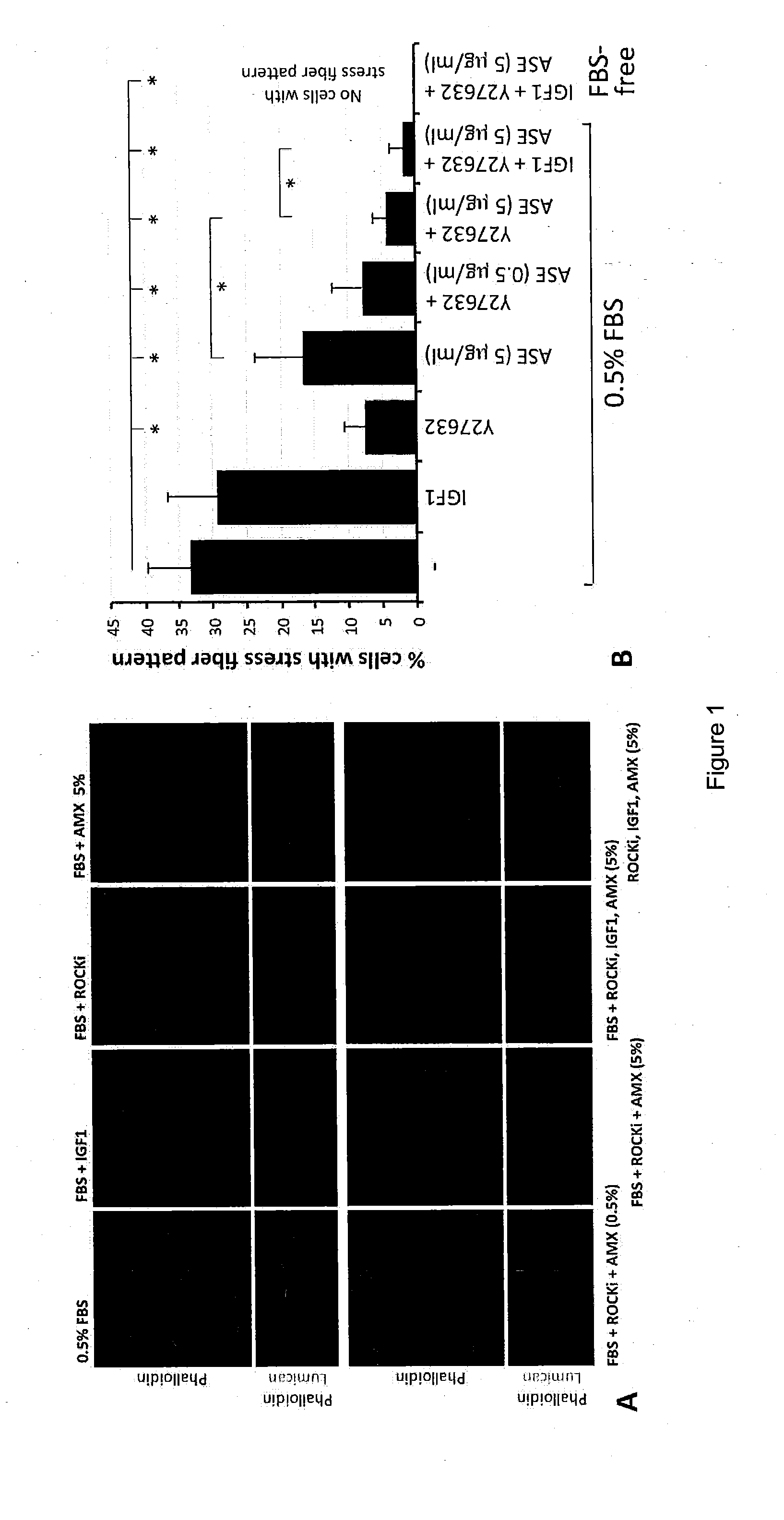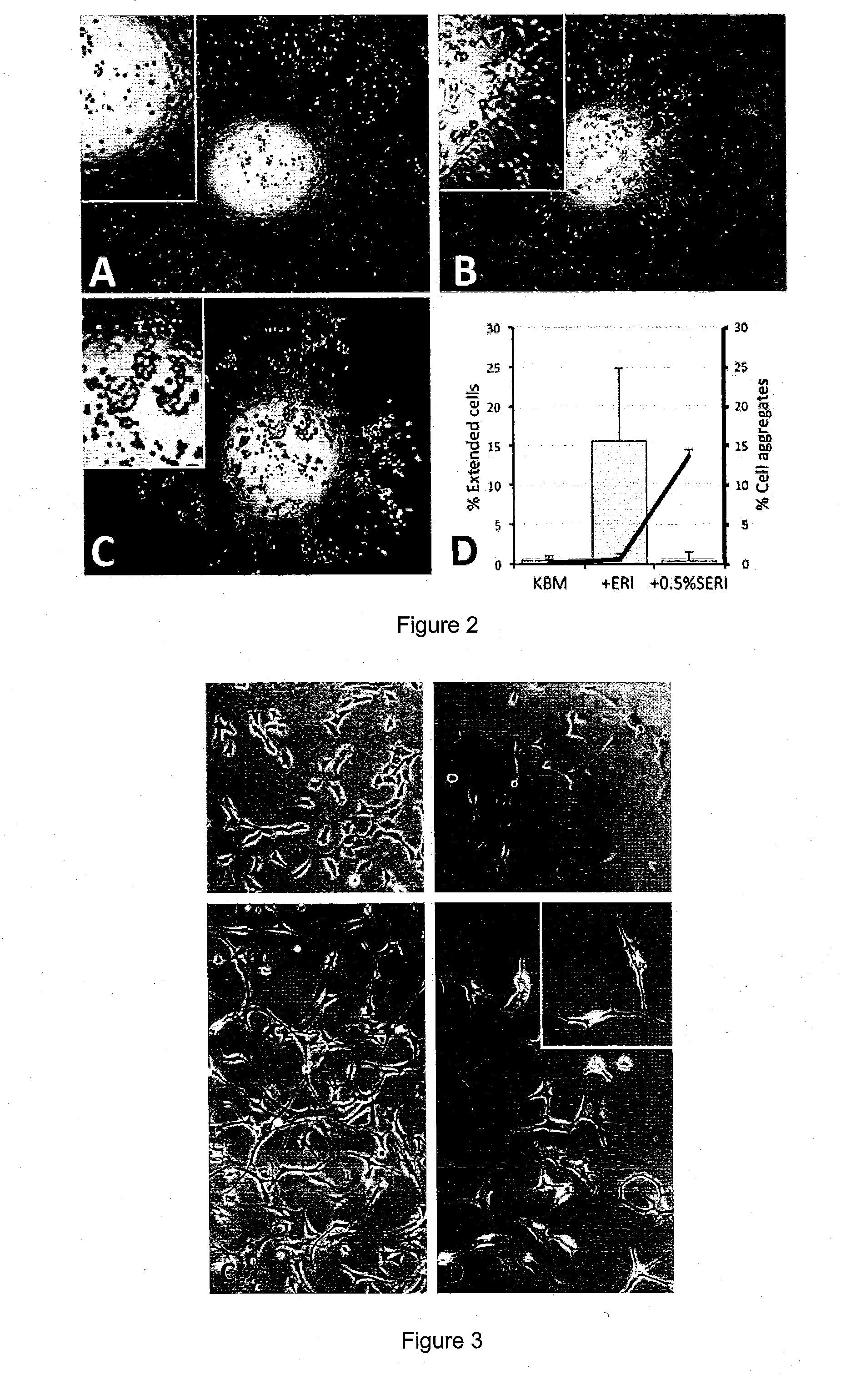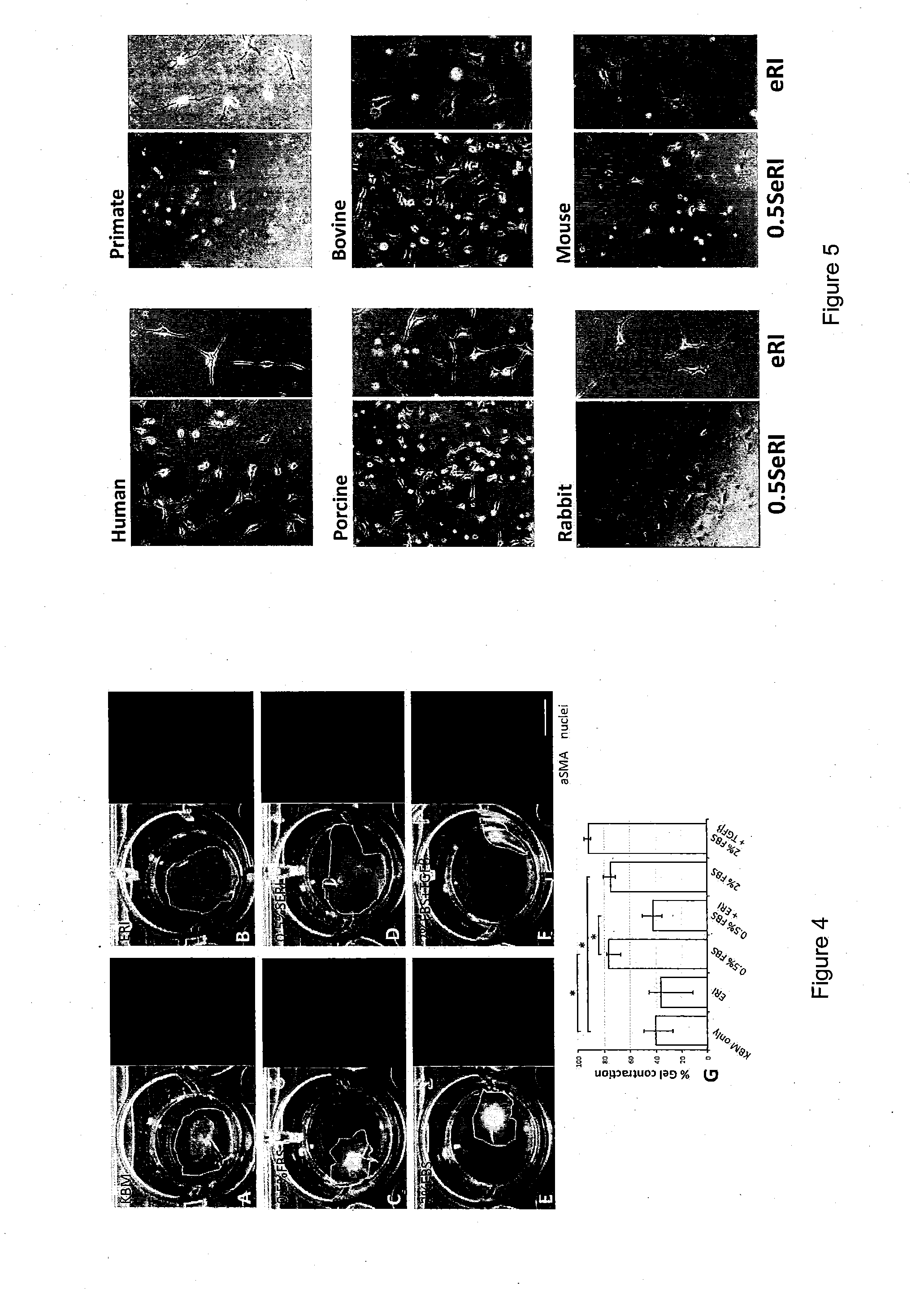Corneal stromal keratocyte culture
a keratocyte and corneal stromal technology, applied in the field of cell culture, tissue culture and tissue engineering, can solve the problems of contamination source, difficult routine cell monitoring of growing cells in the opaque amniotic membrane stromal matrix, and inability to proliferate in serum-free medium
- Summary
- Abstract
- Description
- Claims
- Application Information
AI Technical Summary
Benefits of technology
Problems solved by technology
Method used
Image
Examples
example 1
Materials and Methods
Corneal Stromal Tissue
[0071]Research grade human cadaveric cornea tissues were obtained from Lions Eye Institute for Transplant and Research Inc. (Tampa, Fla., US). In addition, transplant grade human cadaveric corneoscleral tissues after transplantation were obtained from Singapore Eye Bank, Singapore National Eye Centre (Singapore), with consent for research use. The human corneoscleral specimens with endothelial cell count greater than 2,000 cells per mm2 were procured, and preserved in Optisol-GS at 4° C. and transported to the culture laboratory within 14 days of preservation.
Isolation and Culture of Human Corneal Stromal Keratocytes
[0072]Cornea specimens were washed in sterile PBS (0.01 M, Invitrogen, Carlsbad, Calif., US) added with 3% antibiotics-antimycotes (penicillin S, streptomysin sulfate and amphoptericin B, Invitrogen). Central corneal buttons (1 mm from peripheral limbus) were trephined and treated with dispase II (20 mg / ml, Roche, Basal, Switzer...
example 2
Results and Discussion
LAE (ASE) and Protein Characterization
[0084]Soluble LAE (ASE) was prepared from frozen AM collected from the proximal one-fourth to the distal one-third to the placental disc. The devitalized AM was grounded to homogenate and extracted with ice-cold PBS. After removing debris by high-speed centrifugation, the clear supernatant was concentrated by spinning in UltraCel-3K. The protein profile of was successfully mapped with peptide homology ≧95% from the database of 178,828 proteins (Table 1). The candidate protein list was validated by choosing to measure TIMP1 level using ELISA and the concentration was 6.4±4.7 ng per μg protein. Furthermore, significant pathway analysis by MetaCore™ predicted that these proteins could participate in 12 major pathways (P−4 and False Discovery Rate FDR−3). They included TGFβ signaling, cytoskeleton and ECM remodeling, protein folding and maturation as well as immune responses (Table 2).
PUM
 Login to View More
Login to View More Abstract
Description
Claims
Application Information
 Login to View More
Login to View More - R&D
- Intellectual Property
- Life Sciences
- Materials
- Tech Scout
- Unparalleled Data Quality
- Higher Quality Content
- 60% Fewer Hallucinations
Browse by: Latest US Patents, China's latest patents, Technical Efficacy Thesaurus, Application Domain, Technology Topic, Popular Technical Reports.
© 2025 PatSnap. All rights reserved.Legal|Privacy policy|Modern Slavery Act Transparency Statement|Sitemap|About US| Contact US: help@patsnap.com



